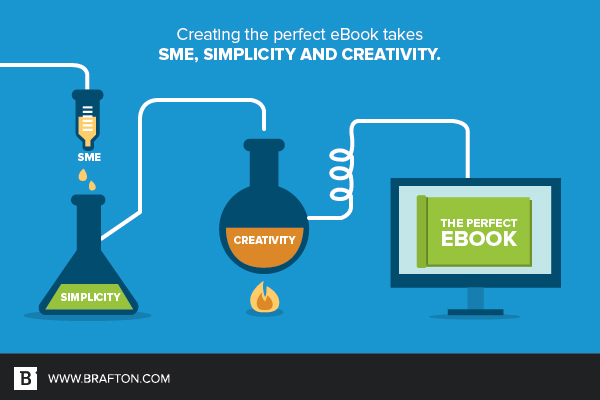Unseating whitepapers from their throne as kings of content marketing, eBooks have quickly become the gold standard in lead generation.
Many companies have taken notice of the trend. B2B brands love eBooks because 67 percent of their customers have read an eBook prior to making purchasing decisions. And of B2C organizations, 34 percent currently use eBooks in their marketing strategies, with 57 percent believing they are an effective form of content for generating leads.
No matter your industry, company size or product offerings, eBooks for marketing are a great way to collect prospects’ information, educate them and start them on the path to conversion.
So what makes a successful eBook? We’ve highlighted several top eBooks we came across in 2016. But if you want an asset that really shines and grabs your readers’ attentions, then check out our tips below on how to create the perfect eBook.
1. Take advantage of industry experts
Use subject matter experts, either internally or externally, to really make your asset stand out. Brafton Project Manager Eric Rubino said this can really boost the effectiveness of your eBook.
“Take advantage of SMEs to improve the quality and thought leadership-ness of your eBook,” he explained. “Their input is incredibly important to ensure you are providing your audience with unique and actionable insights, rather than just repeating commonly known information in a given industry.”
Leverage insight from subject matter experts to lend a more authoritative voice to your eBook.
2. Keep it simple
EBooks are meant to be easily digestible, so make sure your copy reflects that! Avoid using long, drawn-out wording, and cut the fluff! Your readers should be able to quickly get the information they are looking for without having to skim through paragraphs of information.
Also, save your citations for the end of the eBook. Including citations within your copy will make your sentences too long and clunky, taking away from the engaging tone that a successful B2B or B2C eBook should have. As long as you are attributing your information somewhere within the eBook, typically on the last page, you’re covering your bases.
3. Think outside of the box
Piggybacking on the point above, don’t be afraid to have fun with your eBook! They are meant to be engaging pieces of content, and applying a theme or using more conversational language will only help you to meet that goal.
Sure, B2B companies are typically less likely to utilize a more informal voice, but that doesn’t mean you have to be stodgy when it comes to eBooks. Speaking directly to your target audience is a surefire way to engage with them, and even start them on the path to conversion.

4. Create custom imagery
Content that features visuals sees 650 percent more engagement when compared to text-only formats.
By definition, eBooks are assets that include both text and visuals to inform and engage readers.
Custom graphics, whether illustrations or charts, can quickly convey key information you want to highlight, as well as ensure your readers are entertained. You can also include screenshots or photos to show off product features, as this will really help drive your points home when talking about what your customers need.
5. Add interactive elements
Want to kick your eBook engagement up another notch? Consider adding interactive features.
One example would be to create a table of contents that allows prospects to click on a certain section and be taken directly to that page. Or you can include a button on each page that lets readers quickly navigate back to the table of contents. Or both!
Additionally, adding buttons that help readers navigate from page to page makes the eBook easier to navigate and sets it apart from traditional eBooks that require you to scroll through.

6. Pay attention to text formatting
Using the right formatting styles for your copy can make or break your eBook.
“While it’s a no-brainer to make your eBook visually compelling, too often do content marketers often forget about the formatting of text,” Eric said. “Use bolds and colors, and highlight data points or specific sentences in colored boxes or leverage other ways to allow your reader to skim and pull out the important information.”
However, be careful not to overdo the formatting. Highlighting too much, using bullet lists on every page, or over-using other stylistic elements will distract your prospects, and your message will get lost.
With some time, patience and effort, you can develop an effective and successful downloadable asset that takes your eBook marketing goals to the next level and increases your conversions.





